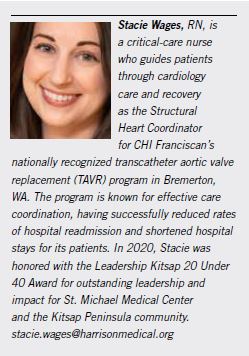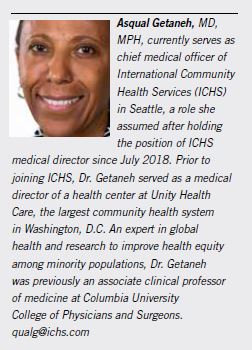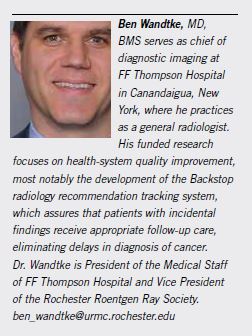Ensuring a smooth journey from diagnosis through treatment and recovery—the healthcare loop—is the goal of healthcare providers and their patients. The reality, however, is often anything but smooth.
Too often, the healthcare loop is hazy, fragmented, or overly complex, leaving patients to fall through its cracks. As a result, many patients experience missed or delayed diagnosis, fail to get needed follow-up care, or accidentally misuse medications because instructions were unclear. Care gaps are particularly harmful to patients facing certain problems, those with complicated medical histories, and immigrants and others with language barriers. For providers and organizations, these challenges contain opportunities for transformation. By identifying key pain points and targeting the barriers to care continuity faced by specific patient populations, practitioners can reduce risk, improve outcomes, and increase patient and provider satisfaction. Below are some suggestions from caregivers and researchers on how they have put their principles into practice to improve outcomes, avoid malpractice, and recover revenue.
 SEAMLESS SURGICAL CARE
SEAMLESS SURGICAL CARE
Stacie Wages, RN,
Structural Heart Coordinator, CHI
Franciscan TAVR Program
Patients can “fall through the cracks” when they don’t understand the plan for treatment, their next steps, or whom to contact with questions or concerns. In my role as Transcatheter Aortic Valve Replacement (TAVR) coordinator, I’m the first point of contact for the patient, and I remain their primary point of contact throughout the process from referral to follow-up. Through education and setting patients’ expectations early in the process, we’ve reduced patients’ length of stay, our need for ICU admissions, and readmissions to the hospital. We modeled our program on the Vancouver 3M (Multidisciplinary, Multimodality, but Minimalist) Clinical Pathway, in which post-TAVR hospital stays are reduced from an average of six days to next-day discharge while improving, rather than compromising, clinical efficacy and safety. When this model is used, research has shown reductions in 30-day mortality from 3.9 percent to 1.5 percent, reductions in 30-day stroke from 6.4 percent to 1.5 percent, and reductions in 30-day hospital readmissions from 6.5 percent to 5.7 percent.
In addition, I created a screening checklist for new patients. We go through their medical history and discuss their valve clinic consult and the possible needed tests. It is also important to discuss their social support at this early stage. The screening is made part of the patient’s medical record, so that the entire medical team can access it. I communicate as often as needed with patients’ referring and primary-care providers to keep them updated with progress and a plan of care.
We have a cohesive heart-valve team that includes coordinators, cardiac surgeons, interventional cardiologists, anesthesiologists, vascular surgeons, nurses, and support staff. We meet weekly to discuss patients’ progress and adjust their plan of care as needed. This cohesive team has allowed us to reduce errors and improve efficiencies. Listening to our patients and their needs has helped us become more responsive and patient-centered. For example, by redesigning our process for patient screening and intake, we created a same-day screening and intake process that eliminated the need for multiple visits prior to surgery, which was a burden for the many patients who come from outside of our immediate area.
Many patients don’t have optimal support systems in place. I assess patients’ social support and needs to ensure they feel empowered and supported in their healthcare choices, thereby increasing their rates of follow-up and overall success.
To do this, I’ve developed relationships with multiple resources in our community, including social workers and transportation assistance. It’s always about that relationship I build with my patient and how I can support them—I work hard to make sure patients feel empowered.
 SUPPORTING VULNERABLE PATIENTS
SUPPORTING VULNERABLE PATIENTS
Asqual Getaneh, MD, MPH,
Chief Medical Officer,
International Community
Health Services (ICHS), Seattle
Patients’ language abilities affect their healthcare outcomes. In general, we know that when clinicians and patients speak the same language, patients are more likely to do well, and this is shown across different conditions. When a patient is referred to a healthcare organization where interpretation services are not robust, patients’ understanding of their doctor’s instructions can remain unclear. This increases the likelihood of adverse events, like failing to pursue follow-up care or taking medication incorrectly. Several studies have shown that immigrants experience higher rates of diagnostic errors, mainly due to communication failure and a lack of familiarity with the U.S. healthcare system.
At ICHS, 50% of our patient population speaks a language other than English, so continuity of care is a big issue. To address this, we do our best to make sure patients work with the same clinician as much as possible. We deploy staff to make sure patients make their appointments to the radiology center or the sub-specialty clinic. We also make sure the results of those visits make it back to the primary-care clinician who ordered the tests, to close the loop. This is our three-step process: first, our eligibility workers determine that a patient is eligible for service; then we have referral staff who make the appointments; and finally, we have medical-records staff who make sure that the patient’s results are entered into the electronic health record.
It’s a huge challenge for clinics and hospitals in rural communities to have robust interpretation services. If there are people in the community with the capability to develop interpretation skills, there’s the potential to develop a trained volunteer pool of interpreters. This can encourage members of the community to provide interpretation services, which is so important to patient outcomes. Similarly, if a community has a pool of people who can be trained to provide care-navigation services to help patients navigate the complexity of healthcare, that can help. And developing a core group of people who have the knowledge and ability to help people understand and choose a healthcare plan provides another layer of support to the community in a way that saves time and is cost-effective.
RESOURCES FOR MEDICAL INTERPRETATION
The International Medical Interpreters Association, EthnoMed, and the National Institutes of Health Medline Plus offer medical interpretation training materials, health information in multiple languages, and telehealth translation information and support.
 REDUCING DIAGNOSTIC ERRORS
REDUCING DIAGNOSTIC ERRORS
Ben Wandtke, MD, BMS, Chief of
Diagnostic Imaging, FF Thompson
Hospital, Canandaigua, NY
In my work as chief of radiology at a community hospital, we had seen about four incidences in a two-year period in which patients in an emergency-department setting were found to have lesions that were not immediately diagnosed as cancer. The next time these same patients came to the ED, two or three years later, they had advanced-stage cancer. When we reviewed these cases, we determined these diagnoses had been delayed. We believed the cases were preventable, and that the diagnoses were delayed unnecessarily.
We decided to see if we could get more early-stage diagnoses. This was the beginning of what we called the Backstop system. It involved a series of three interventions performed one after the other, starting with contacting the patient’s primary-care provider at regular intervals. As an added benefit to this work, about one in six patients we reached out to who did not have a PCP was able to find one and get the follow-up care they wouldn’t have had otherwise.
The biggest risk for diagnostic error is in the transitions of care for patients who are seen in a hospital setting like an emergency department. At my hospital, about 45% of the patients were coming back for their recommended follow-up care. When we finished our pilot study in July 2017, we had increased that to 71%, which is a 38% increase in follow-up compliance.
In July 2017, we implemented the Backstop system in the University of Rochester Health System. Our results were almost identical to those from the pilot study: we increased the rate of follow-up compliance percentage from the mid-50s to the mid-70s. We saw about an 85% reduction in the number of patients at risk for delayed diagnosis.
When our radiologists made calls to primary-care providers to talk to them about follow-up for patients, we were concerned the PCPs might feel we were overstepping our bounds—but we found almost universally the opposite effect. They were surprised and pleased. We weren’t disrupting them, we were potentially saving their patient’s life and preventing a malpractice event. As part of our program, patients also had the opportunity to speak to a radiologist. As a radiologist, you rarely see the patients you care for, so this was an opportunity for practitioners to step out of the reading room and interact with patients on a more personal level.